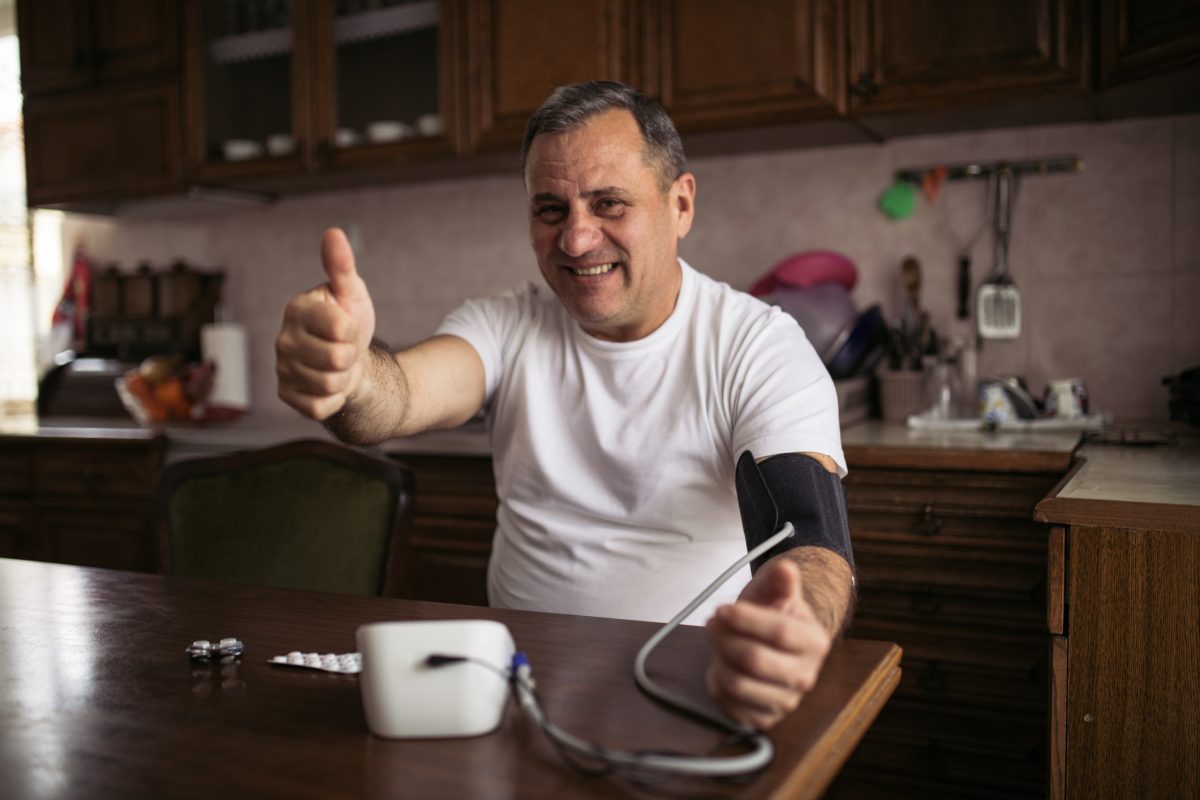Did you know that living with high blood pressure can do far more than damage your heart, putting you at risk for heart attack and stroke?
It can also weaken blood vessels throughout your body, limiting blood flow and dramatically reducing kidney function.
This causes a backup of fluid into your blood vessels, raising your blood pressure even more and creating a dangerous, even deadly, cycle.
Luckily, researchers from The University of Texas have found a simple, natural and extremely effective way to break both ends of that cycle in one fell swoop.
It not only lowers blood pressure, but it nurtures kidney health and even reduces your chances of developing heart disease.
And all you have to do is follow your mother’s advice from when you were a kid…
Fix it all with more fruits and veggies
The researchers had already discovered that eating an acidic diet put a strain on the kidneys. And they had proven that reversing that diet to promote a more pH-balanced environment in the body was capable of supporting kidney health.
So they set out to see if adding potent alkalizers — ones that you and I simply call fruits and vegetables — to the diets of people with chronic kidney disease could reduce that strain and in the process, help break the feedback loop that was raising their blood pressure.
In a randomized control trial over five years, investigators divided the cohort of 153 patients with hypertension into three groups:
- Study participants adding 2-4 cups of base-producing fruits and vegetables in addition to their usual daily food intake.
- Study participants prescribed NaHCO3 (acid-reducing sodium bicarbonate, which is common baking soda) tablets in two daily doses of 4-5 650 mg tablets.
- Study participants receiving standard medical care from primary care clinicians
The results of the study showed that both fruits and vegetables and NaHCO3 improved kidney health — but only fruits and vegetables, and not NaHCO3, reduced blood pressure and improved markers of cardiovascular disease risk.
Diet is the first line of treatment
The researchers concluded that “fruits and vegetables should be ‘foundational’ treatment for patients with hypertension because we accomplish all three goals (kidney health, lower blood pressure, and reduced cardiovascular disease risk) with fruits and vegetables, and we can do so with lower medication doses.”
And that term — ‘foundational’ — is extremely important.
According to the team, most doctors start by treating high blood pressure with drugs (which can carry numerous side effects) and only add in diet strategies if blood pressure is not properly controlled.
However, as the results of this study clearly show, the opposite should be true. And treatment should begin with fruits and vegetables and then medications can be added as needed.
Alkalizing your diet
Acidic foods that should go on the rarely-to-never list include meats, highly processed foods, dairy, processed meats and starchy foods, coffee and alcohol.
Carbonated beverages also fall in the acidic category and should be avoided.
Instead alkalize your diet by:
- Eating plenty of fresh fruits and veggies, especially non-starchy vegetables, like leafy greens, broccoli, cabbage and carrots; nuts and seeds; legumes; wild rice, oats and quinoa.
- Drinking alkaline water which you can buy at your local health store or buy an alkaline water pitcher. You can also add a little fresh lemon juice to plain water. A lemon is acidic before it’s ingested. After it’s been processed by the body it has an alkalizing effect.
- Buying organic produce as much as possible. Chemicals commonly used in commercial farming are acid-promoting. That means if you are choosing produce that is not organic, you undercut the alkaline factor of those foods.
- Adding more beans to your diet because plant proteins help tip your body into a naturally alkaline state.
Sources:
High Blood Pressure & Kidney Disease – NIH
Eating more fruits & vegetables to reduce dietary acid lowers blood pressure and improves kidney and heart health in patients with hypertension – EurekAlert!
Read full article here


